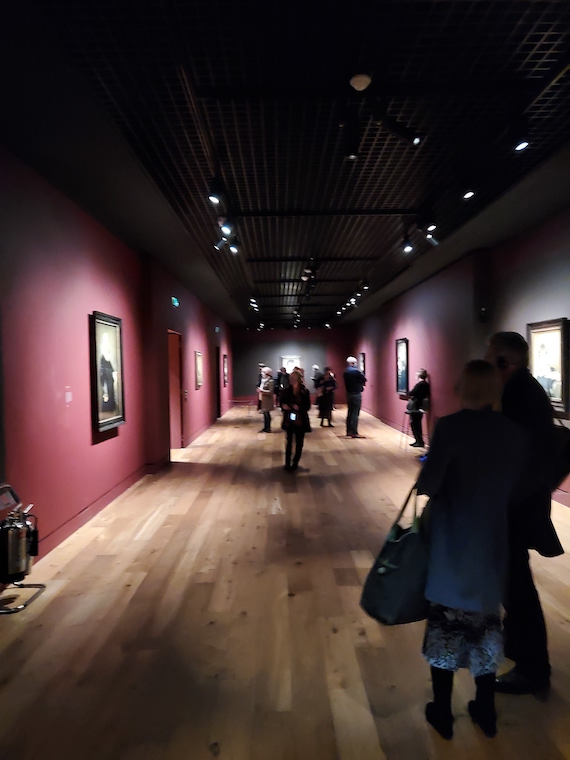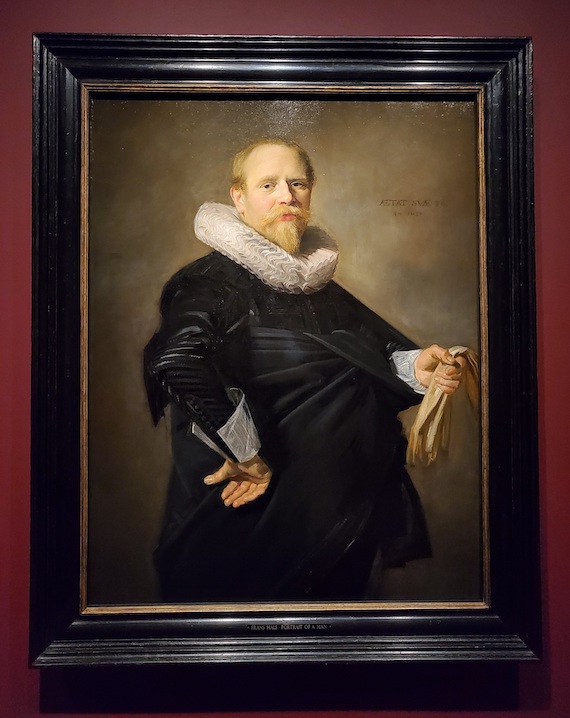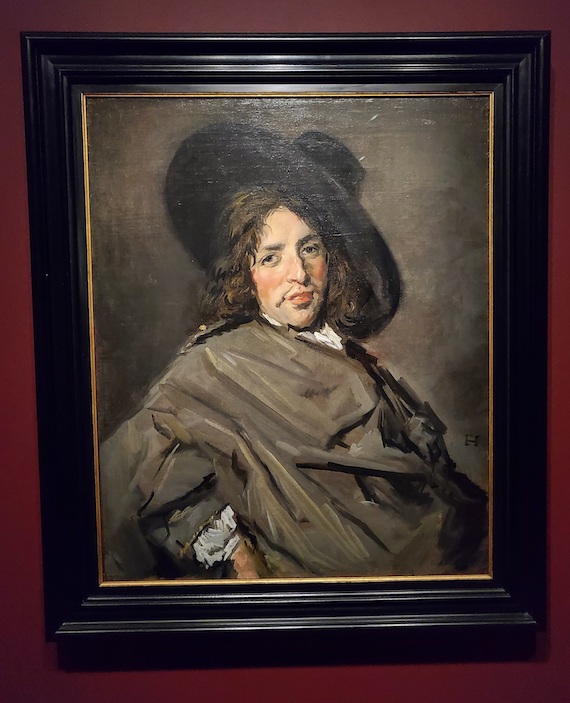Frans Hals: The Male Portrait – review
August 15, 2022Frans Hals: The Male Portrait at the Wallace Collection, London. A cluster of portraits of 17th century men, hanging in a dim room in the basement of a stately home may not seem a likely topic for our blog about vintage fashion. However, 17th century men, especially those rich enough to get their portraits painted, were absolute peacocks, and their fashions in lace and velvet are crazily covetable.
This exhibition foregrounds one of the Wallace Collection’s many prize paintings: “The Laughing Cavalier”, (1624) by Frans Hals. This world-famous painting, with its immediacy and life-like gaze, is probably comparable to the Mona Lisa in terms of how many people could call it to mind, even those not especially well versed in art. Frans Hals himself, however, is not so well-known as Leonardo da Vinci. This exhibition is a fascinating step in showing what else this painter did. Sort of a “If you liked The Laughing Cavalier, you may also be interested in…” exhibition. Well, its definitely worth seeing.

View of Frans Hals: The Male Portrait at the Wallace Collection
Frans Hals: The Male Portrait – The Laughing Cavalier (1624)
This man is not actually laughing, nor is he a Cavalier. The name was given to him when he was first shown in England by the Victorian public, and it secured him his fame. He is gently smirking; his upturned moustache amplifies the effect (fittingly, the exhibition is in conjunction with men’s health charity initiative Movember, which encourages men to grow a moustache for charity).
As for his job, he might be a military man but is probably a cloth merchant. If he is, he is a very fine advertisement for his wares. He is very richly dressed in an embroidered doublet, with slashed sleeves to show his pristine white lace pulled through from his shirt beneath. The doublet is in striking colours: gold, red, white and orange on a black ground.
Sumptuous Embroidery
The embroidery is probably gold-work, amongst other techniques, and depicts twining imagery and symbols: birds, serpents and flowers, flaming trumpets, arrows, fire, bees, leaves, sun-rays, and what looks very much like a winged mushroom. These stand for the measures and pains of love, and other symbols, like an obelisk, stand for his steadfastness. His buttons and button holes are copper coloured, as is the turned back cuff of his coat. It is an astonishing piece, and would have taken expert workmen many hours to complete.
He has many layers of deeply lace trimmed collar, a silk ribbon round his neck, and carefully starched lace cuffs, the better to see the fine detail of the work. There is a wide black damask sash draped across his middle and you can just see the hilt of his decorative golden sword. His skin shines with health, his curls are nicely brushed, and his moustache and goatee are carefully groomed. The broad brim of his black hat is folded away from his face elaborately. The man, who has been tentative identified as Tieleman Roosterman, stands with his hand on his hip. He’s confident that we’ll love his outfit as much as he does.
Frans Hals: The Male Portrait – Portrait of Tieleman Roosterman (1634)
This is definitely Tieleman Roosterman and yes, he bears a striking resemblance to the Laughing Cavalier. He is ten years older now. The inscription on the first portrait states that the sitter is 26. Here, he is 36. The upturned moustache is still the same, though his beard is a little longer. And this man loves fashion too.
The dress today is monochrome, but in fine silk velvet. There are no embroideries, but a row of tiny buttons decorate the front and also the sleeves. There are four black silk bows, tipped with metal, on his waistline. His collar is just as pristine white as before, and falls in many layers. His cuff is lace edged and carefully starched. The hat in his hand is just as dramatically brimmed as before. He wears one cream kid glove. The other hand is bare. There is a matching portrait of his wife, Catharina Brugmans, painted the same year on their marriage. In it, she wears the other glove.
Portrait of a Man, 1630

Portrait of a Man. From the exhibition Frans Hals: The Male Portrait at the Wallace Collection. Photo G Jones.
Another portrait where gloves are significant is this one, of an unidentified 36-year-old man. (Hals writes this information, the age of the sitter and the date, but not their name, on the front of each canvas). He is also all in black bar his fine white muslin (but not lace-trimmed) cuffs. And this time, a white ruff. There is a corded decorative texture on his sleeve and you can see the tabs at the shoulder of his doublet and the tiny fabric covered buttons down the front. Most of his outfit is hidden with a huge piece of plain black fabric, possibly his cloak, which is tied around his middle.
His fingers are manicured and in one hand, he holds a pair of gloves. They are actually women’s gloves. Since gloves were so expensive at that time, it is conjectured that they were being offered as a gift, perhaps in courtship.
Portrait of a Man, c1660-63

Painting from Frans Hals: The Male Portrait at the Wallace Collection
This painting is fascinating. The paintings are not hung in chronological order, and so there’s no obvious visual progression in style. However, it’s clear that this is either from a period of great experimentation, or towards the end of Hals’ life, when his control over the paintbrush had wavered. The sweeps of paint are so broad that they anticipate the Post-Impressionists, a modern art movement of 200 or so later. Standing back just a little, they coalesce to form a portrait of a rather louche looking man. A grey cloak again covers nearly his entire front, obscuring the details of his outfit. Perhaps Hals didn’t want to be bothered to paint the buttons. His hat is at an extreme angle, his long hair needs washing, and he looks at you like a drunkard in a pub, about to confide something.
But as always, this very much looks like a recognisable person, probably a good likeness. It was, in fact, painted when Hals was in his eighties.
Frans Hals: The Male Portrait at the Wallace Collection, London was on until 30th January 2022.


